Radish Variety Trial in Western North Carolina
go.ncsu.edu/readext?529249
en Español / em Português
El inglés es el idioma de control de esta página. En la medida en que haya algún conflicto entre la traducción al inglés y la traducción, el inglés prevalece.
Al hacer clic en el enlace de traducción se activa un servicio de traducción gratuito para convertir la página al español. Al igual que con cualquier traducción por Internet, la conversión no es sensible al contexto y puede que no traduzca el texto en su significado original. NC State Extension no garantiza la exactitud del texto traducido. Por favor, tenga en cuenta que algunas aplicaciones y/o servicios pueden no funcionar como se espera cuando se traducen.
Português
Inglês é o idioma de controle desta página. Na medida que haja algum conflito entre o texto original em Inglês e a tradução, o Inglês prevalece.
Ao clicar no link de tradução, um serviço gratuito de tradução será ativado para converter a página para o Português. Como em qualquer tradução pela internet, a conversão não é sensivel ao contexto e pode não ocorrer a tradução para o significado orginal. O serviço de Extensão da Carolina do Norte (NC State Extension) não garante a exatidão do texto traduzido. Por favor, observe que algumas funções ou serviços podem não funcionar como esperado após a tradução.
English
English is the controlling language of this page. To the extent there is any conflict between the English text and the translation, English controls.
Clicking on the translation link activates a free translation service to convert the page to Spanish. As with any Internet translation, the conversion is not context-sensitive and may not translate the text to its original meaning. NC State Extension does not guarantee the accuracy of the translated text. Please note that some applications and/or services may not function as expected when translated.
Collapse ▲
Freshly harvested spring radish
11/16/2023 – This project took place in 2018, but the information is still relevant!
5/23/2018 – The Southeastern Extension Vegetable Workers (SEVEW) is a group of extension horticulturists, entomologists, plant pathologists, weed scientists, and soil scientists from across the Southeast who write, publish, and edit the Southeastern U.S. Vegetable Crop Handbook. The group comes together every summer to discuss vegetable production, share experiences, problem solve, and update the handbook. In 2017, the horticulturists decided to start a series of regional vegetable trials. The plan is to trial a different vegetable each year in as many locations as the group can handle. We hope to get industry support in the future, but this first year we needed to demonstrate that we could make it happen and that it would be a valuable investment. So we chose radishes as our first test crop. Radishes don’t get much attention, but they are a consumer favorite, especially in direct market venues such as farmers’ markets.
Joe Kemble, (now retired) Extension Specialist at Auburn University, graciously purchased seed of 16 varieties. Kiki Fontenot, Extension Specialist at Louisiana State University, coordinated the project. We had trial sites in 14 locations in eight states: Arkansas, Louisiana, Mississippi, North Carolina, Oklahoma, South Carolina, Tennessee, and Virginia.
These are the varieties that were included in the trials and the seed companies they were purchased from:
| Variety | Seed Company |
| Cherry Belle | Stokes |
| Sparkler | Stokes |
| Valentine | Stokes |
| Easter Egg | Johnny’s |
| Amethyst | Johnny’s |
| Bacchus | Johnny’s |
| Sora | Johnny’s |
| Nero | Johnny’s |
| Pink Beauty | Johnny’s |
| Ping Pong | Johnny’s |
| Stargazer | Territorial |
| Red Head | Territorial |
| Runder Schwarzer | Territorial |
| Mardi Gras | Burpee |
| Watermelon | Burpee |
| Cook’s Custom Blend | Burpee |
There will be a full report coming out covering all the sites, but I just wanted to share some of the information from the western North Carolina site that my employees, Leonora Stefanile and Gwen Casebeer, managed.
Located in the southern mountains of western North Carolina, in Mills River, our trial was probably one of the last to be planted and harvested. We prepared the planting area on March 8.

Seed beds prepped for planting
The seeds for each variety were carefully weighed out and labeled.
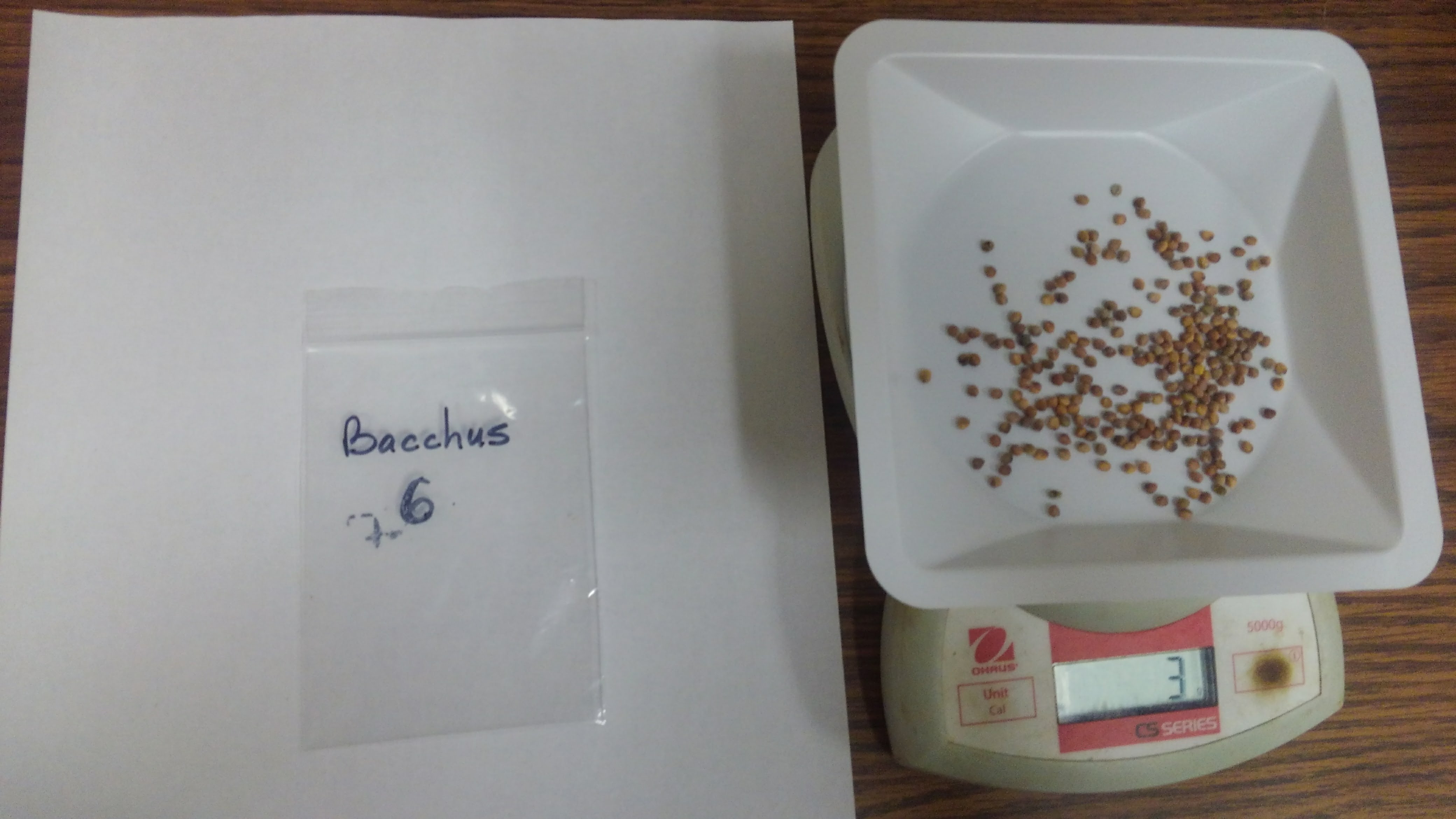
Weighing out seeds for the test plots
The trial was planted on March 20.

Planting the radish trial by hand
For the next month and a half, the plots were carefully tended and data were collected on emergence, insect and disease damage, and any unusual growth issues. The radishes grew quickly in the cool spring weather.
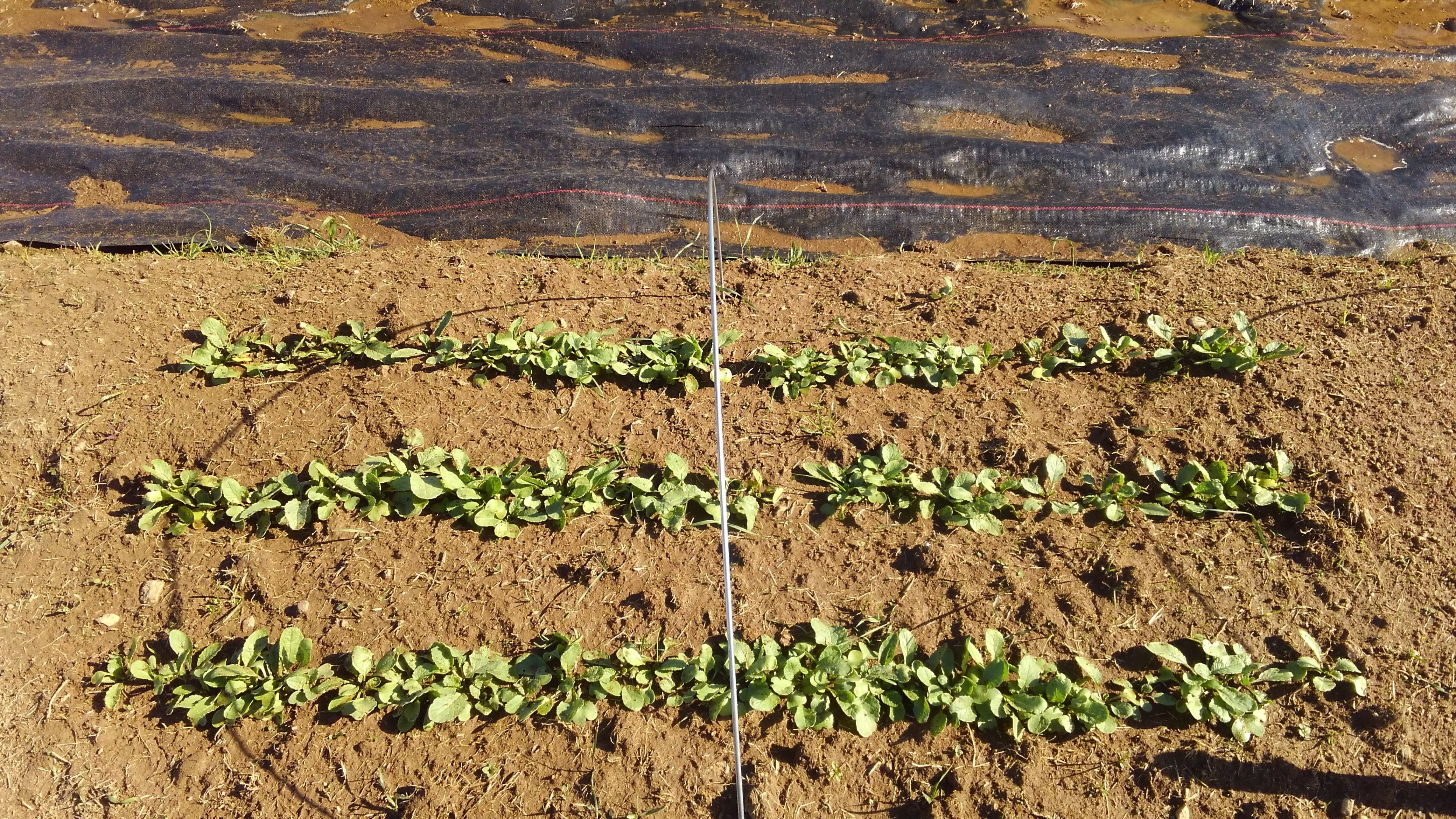
Radishes after one month of growth
By late April the radishes showed evidence of bulbing up.
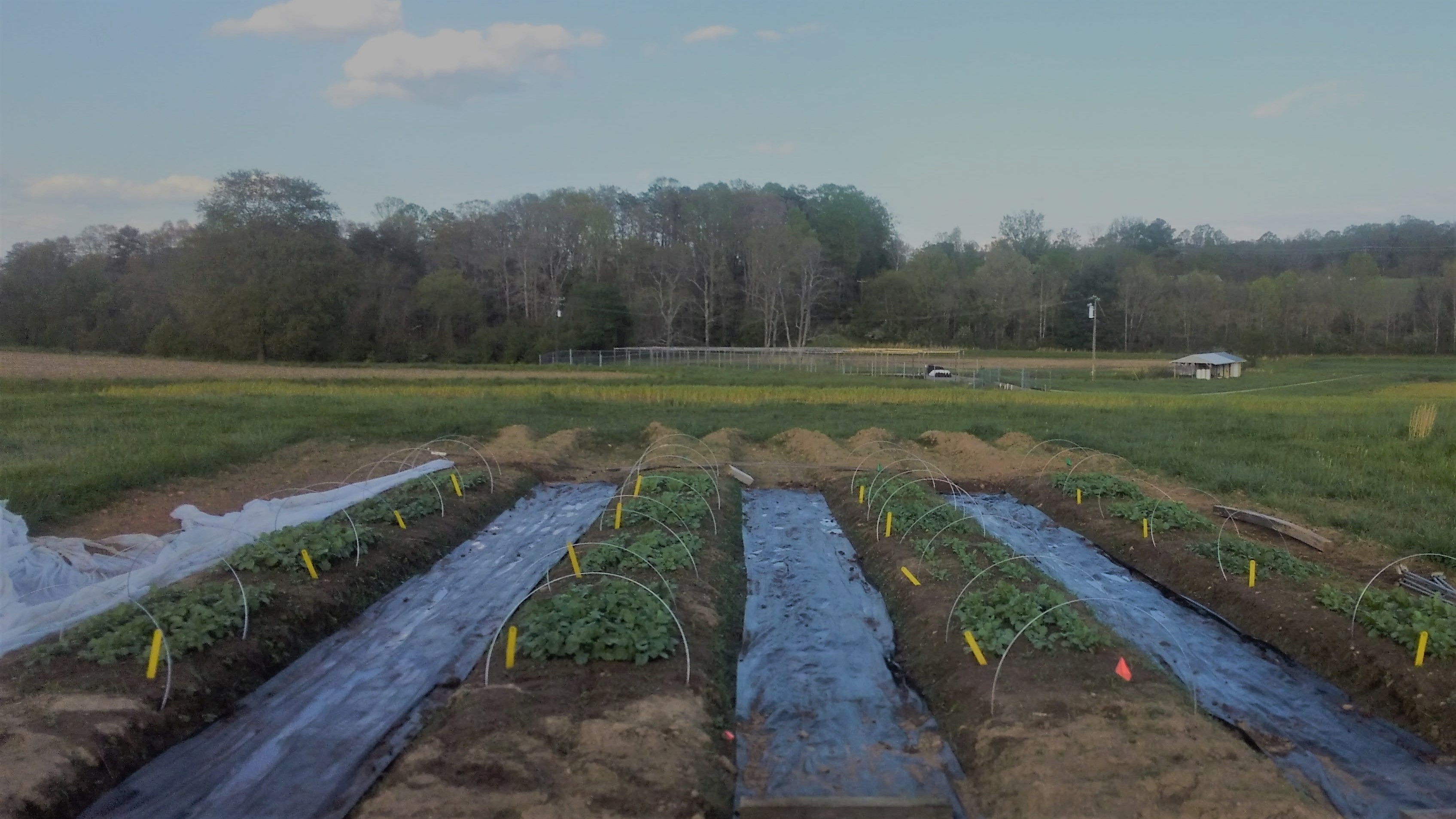
Trial site at the end of April
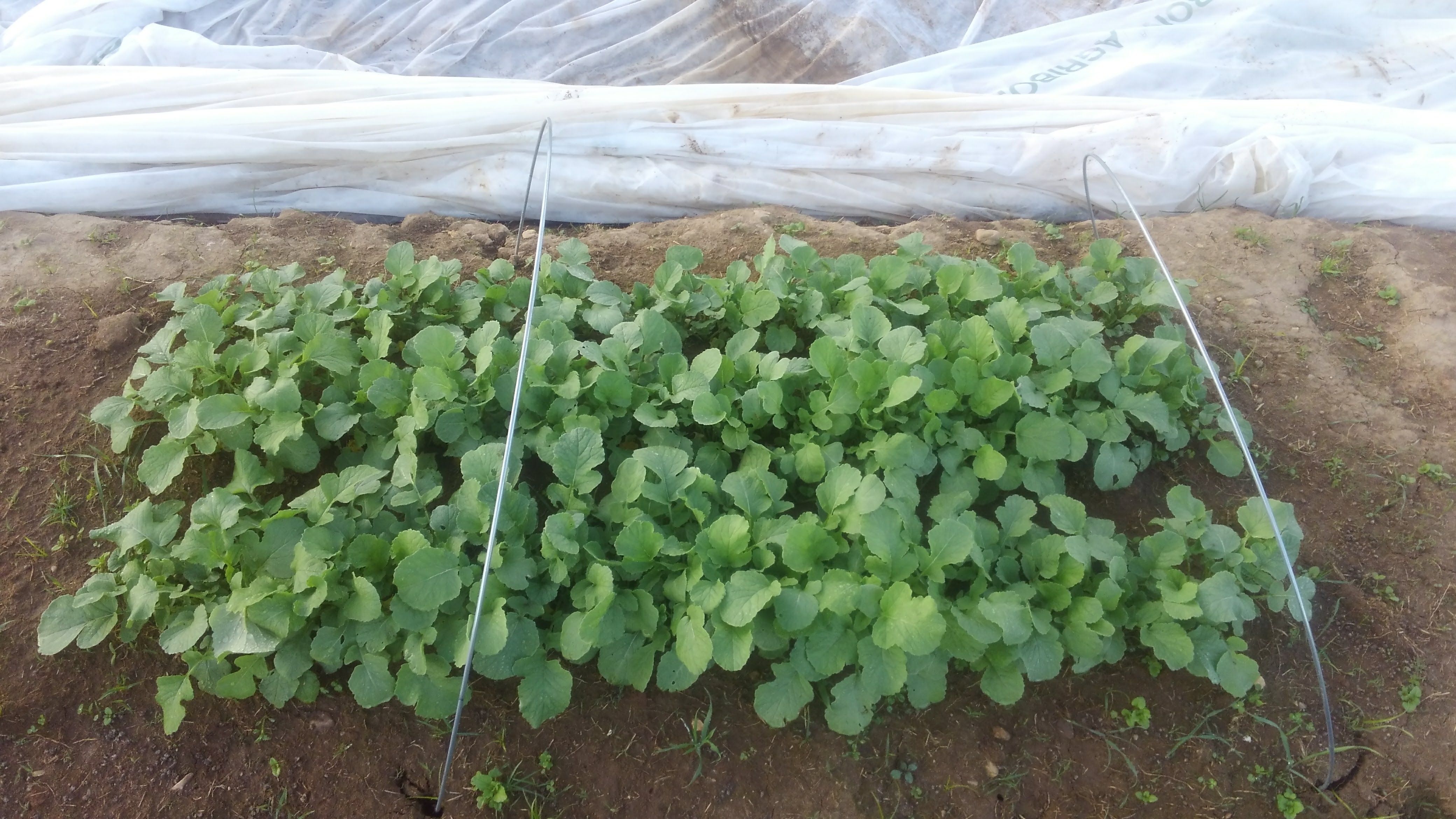
Plants bulbing up in late April
Harvests took place on May 1, 7, 15, and 25.

Harvesting the radish trials
These were harvested from May 1 through May 7:

Cherry Belle from Stokes

Cherry Belle from Stokes

Amethyst from Johnny’s

Amethyst from Johnny’s

Easter Egg from Johnny’s

Easter Egg from Johnny’s

Sora from Johnny’s
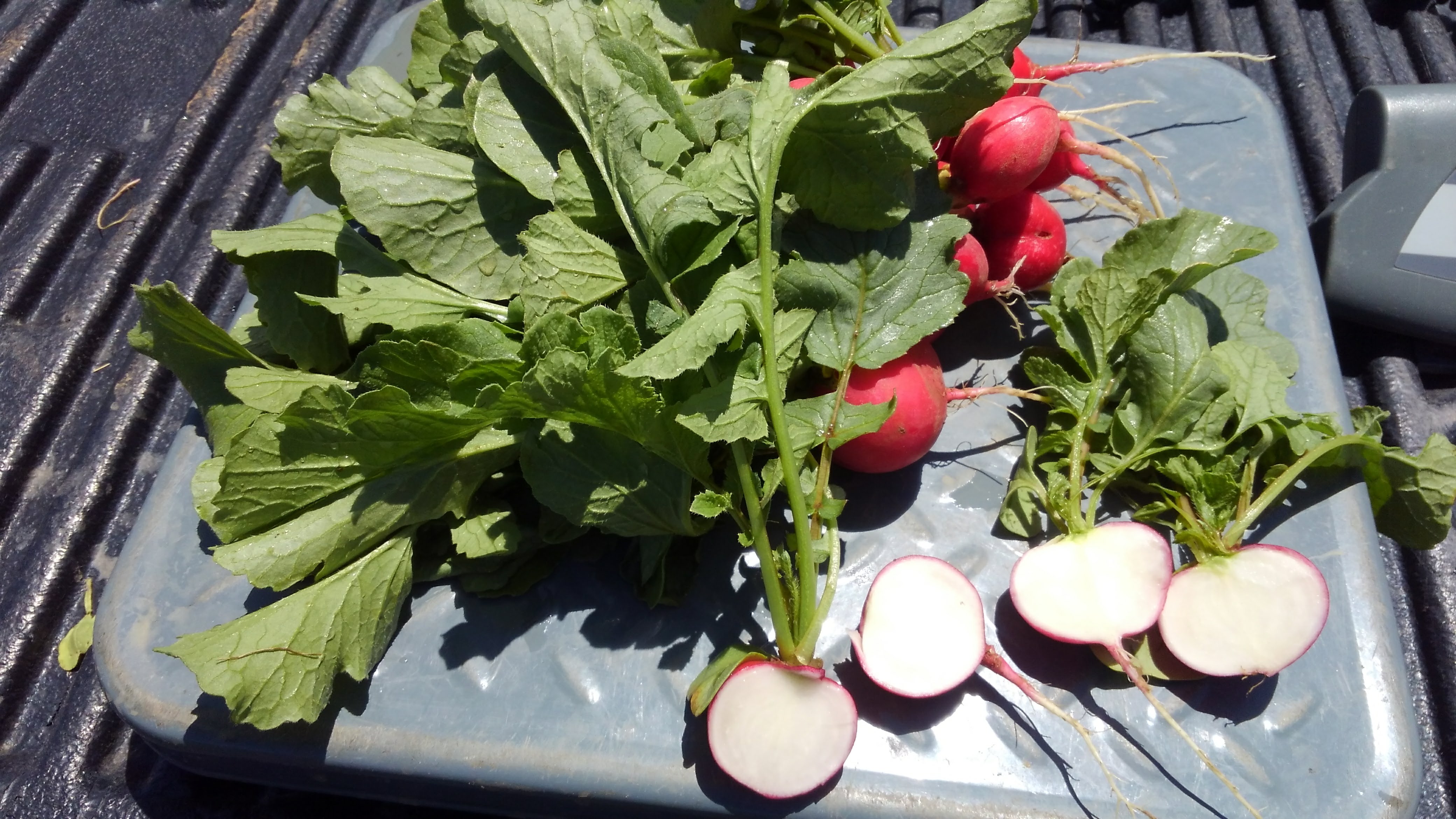
Sora from Johnny’s

Bacchus from Johnny’s
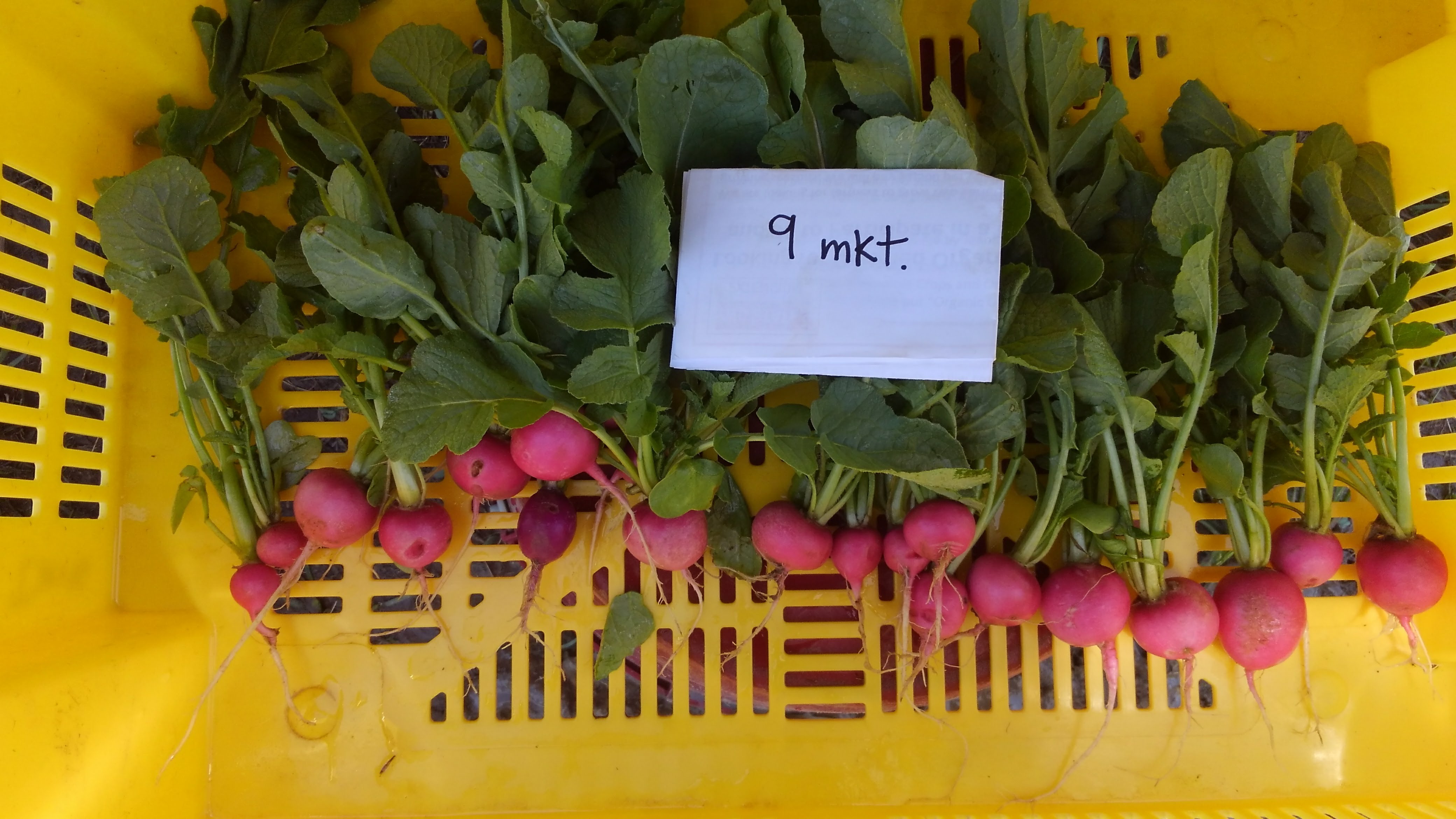
Pink Beauty from Johnny’s
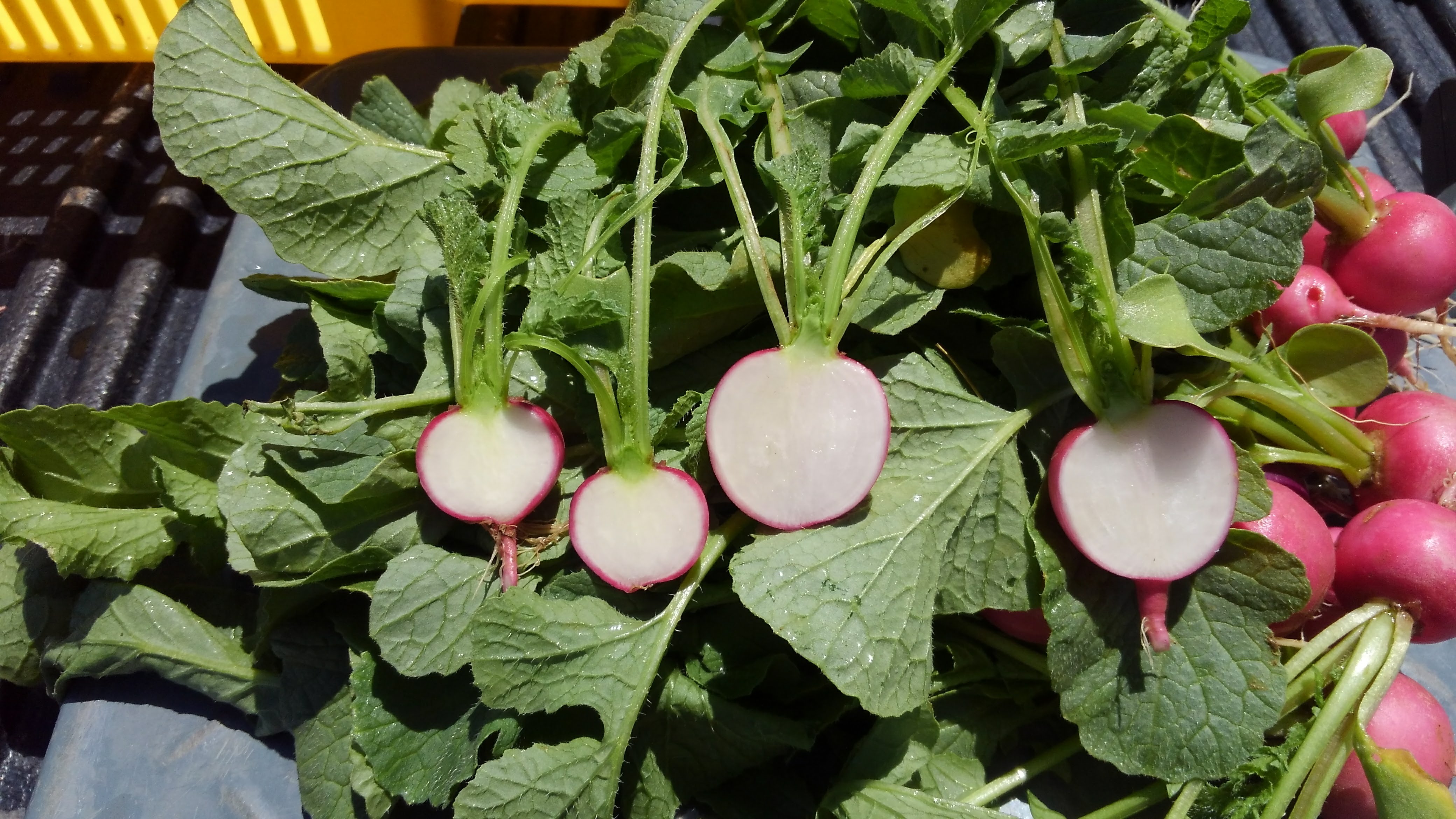
Pink Beauty from Johnny’s
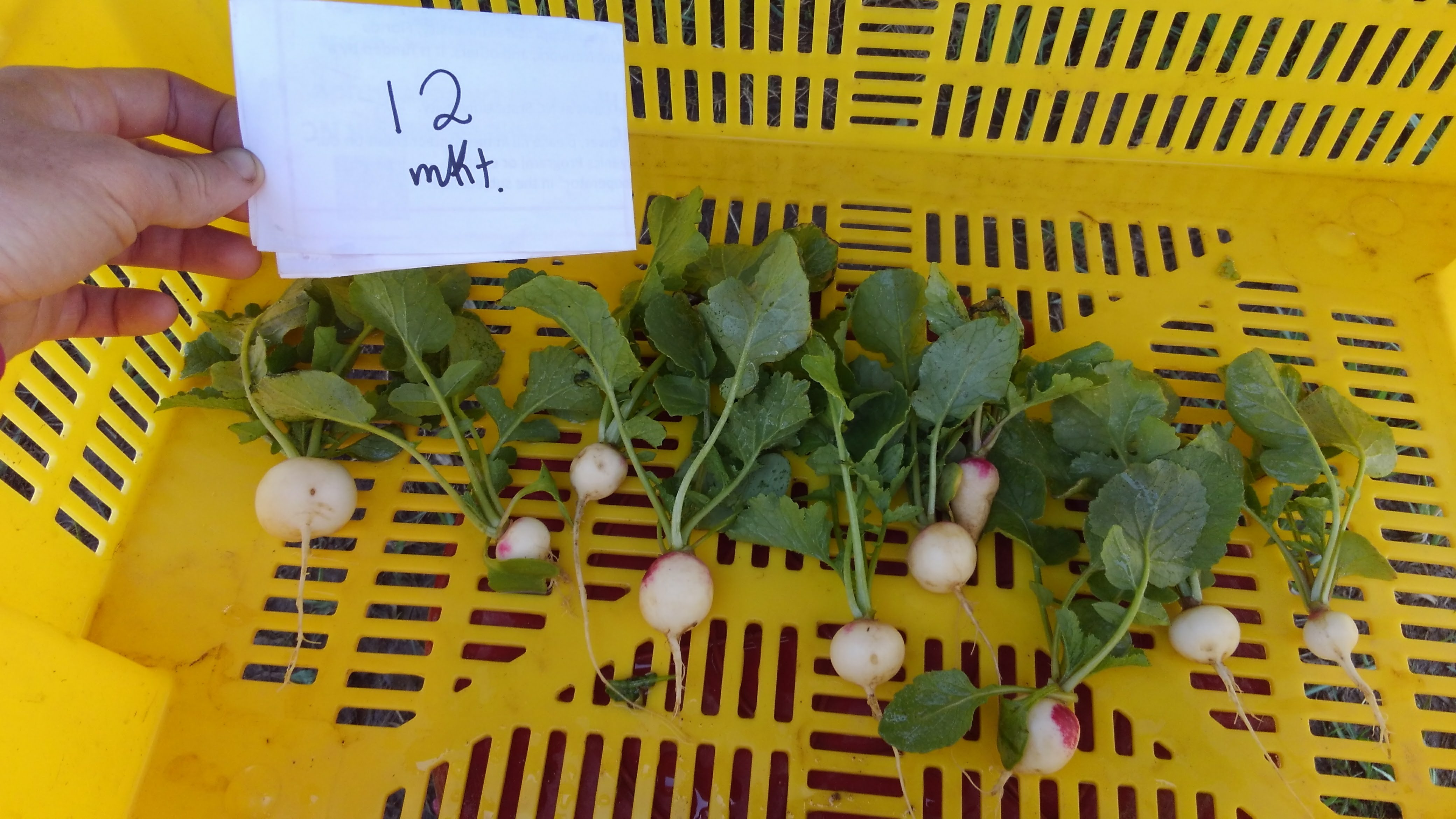
Red Head from Territorial
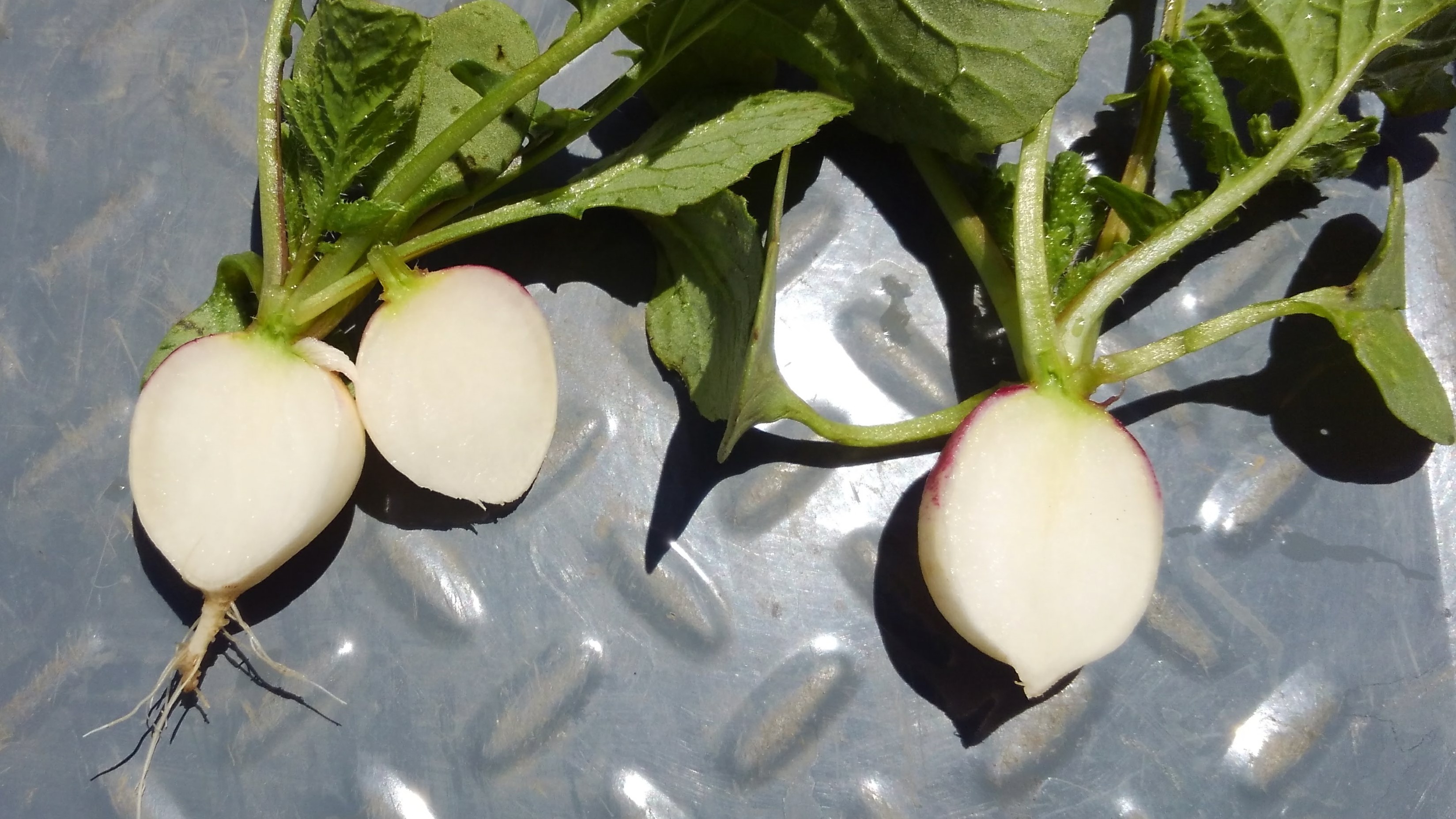
Red Head from Territorial
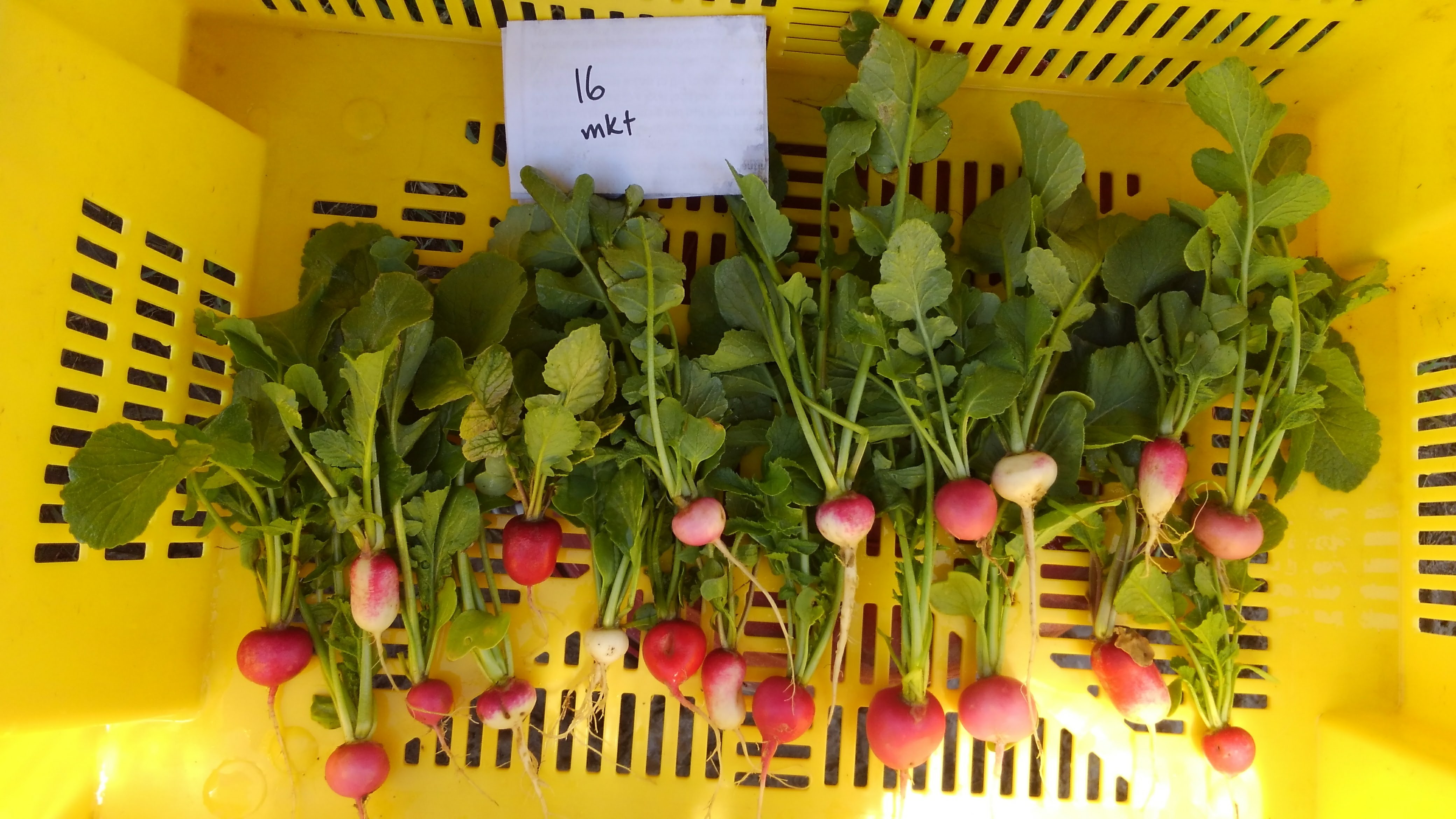
Cooks Custom Blend from Burpee
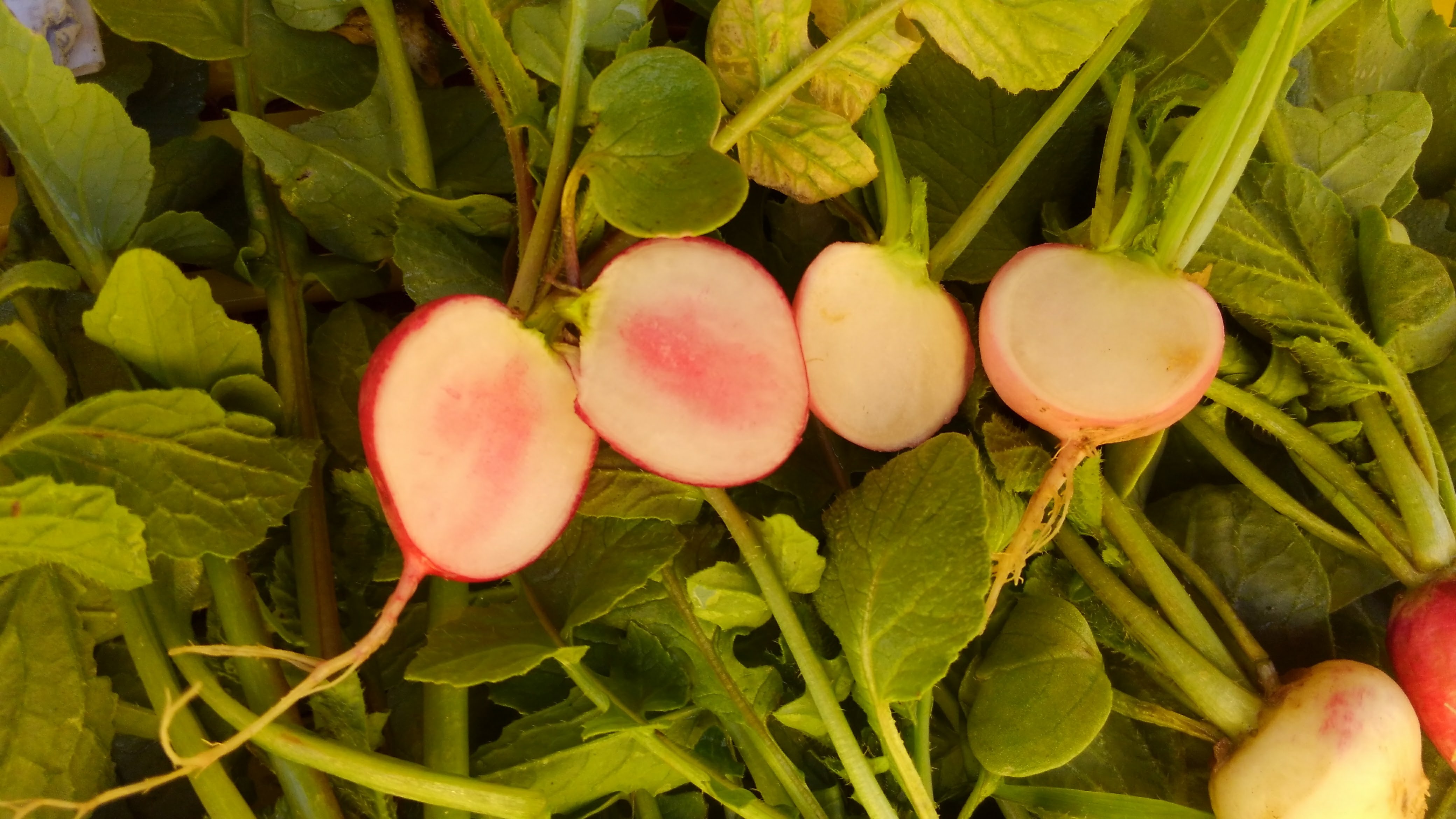
Cooks Custom Blend from Burpee

Sparkler from Stokes

Sparkler from Stokes

Ping Pong from Johnny’s

Ping Pong from Johnny’s

Mardi Gras from Burpee

Mardi Gras from Burpee

Mardi Gras from Burpee
These later varieties were harvested from May 16 through May 25:

Nero from Johnny’s
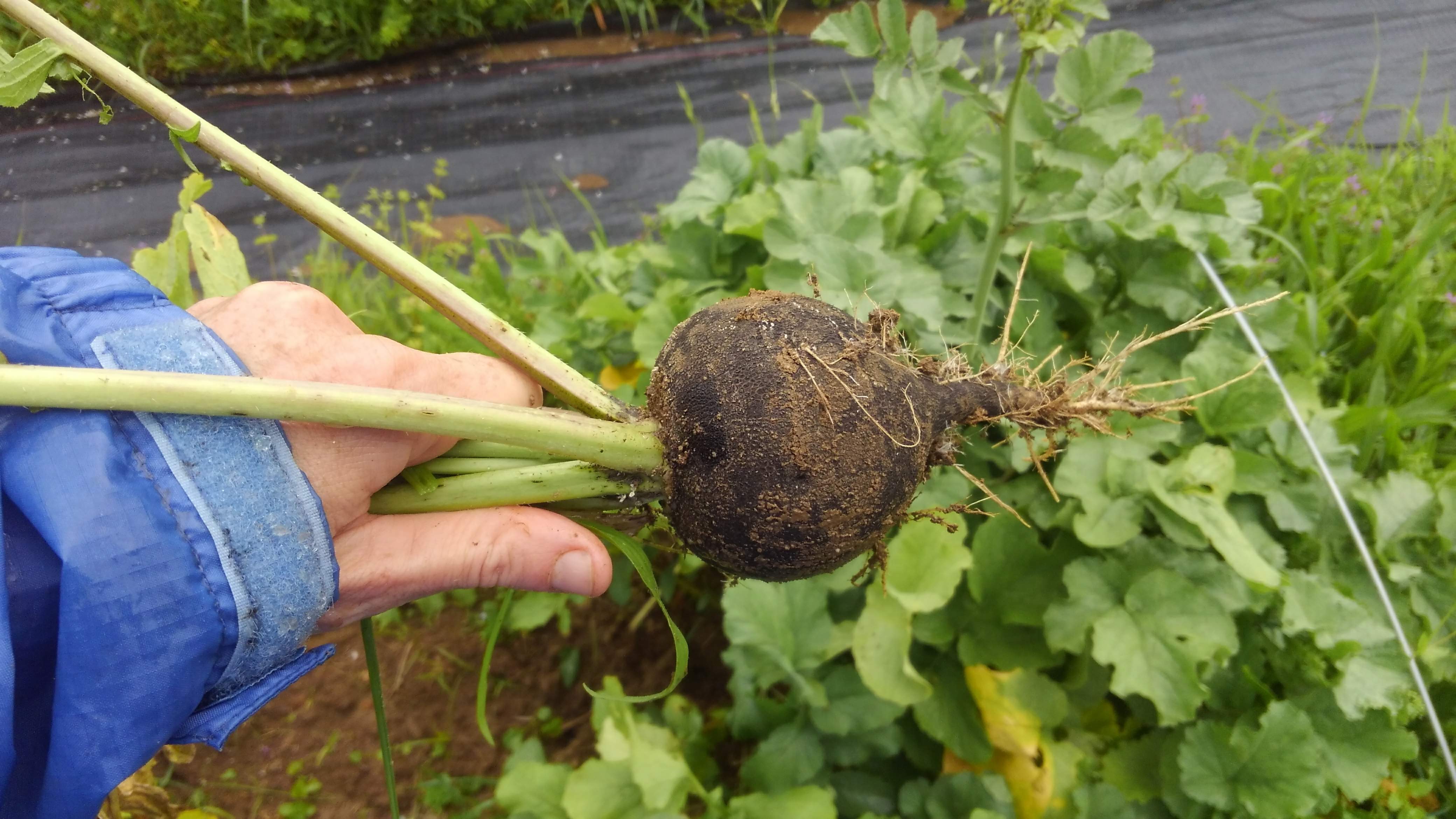
Nero from Johnny’s

Valentine from Stokes

Valentine from Stokes

Stargazer from Territorial

Stargazer from Territorial

Runder Schwarzer from Territorial
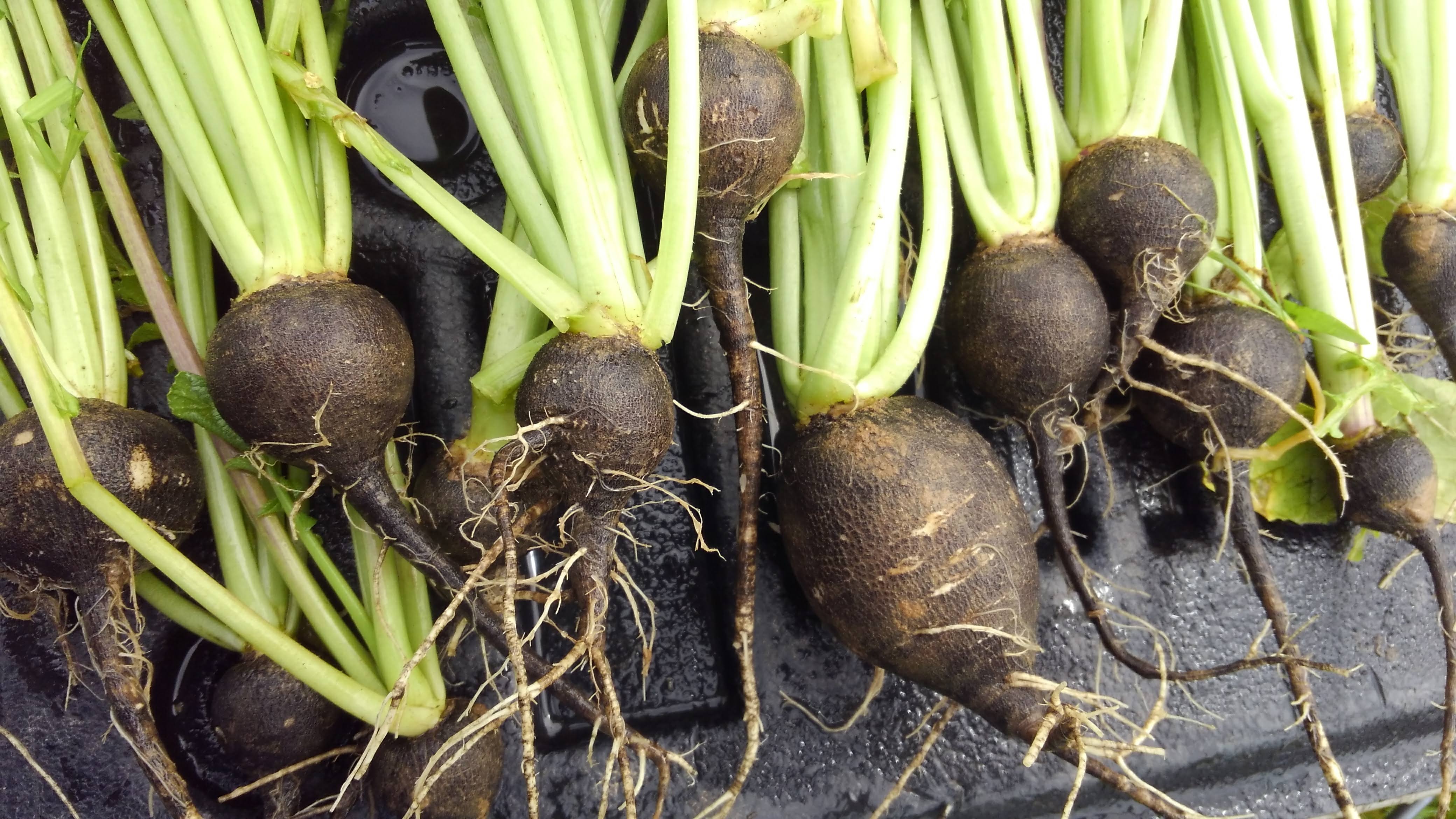
Runder Schwarzer from Territorial
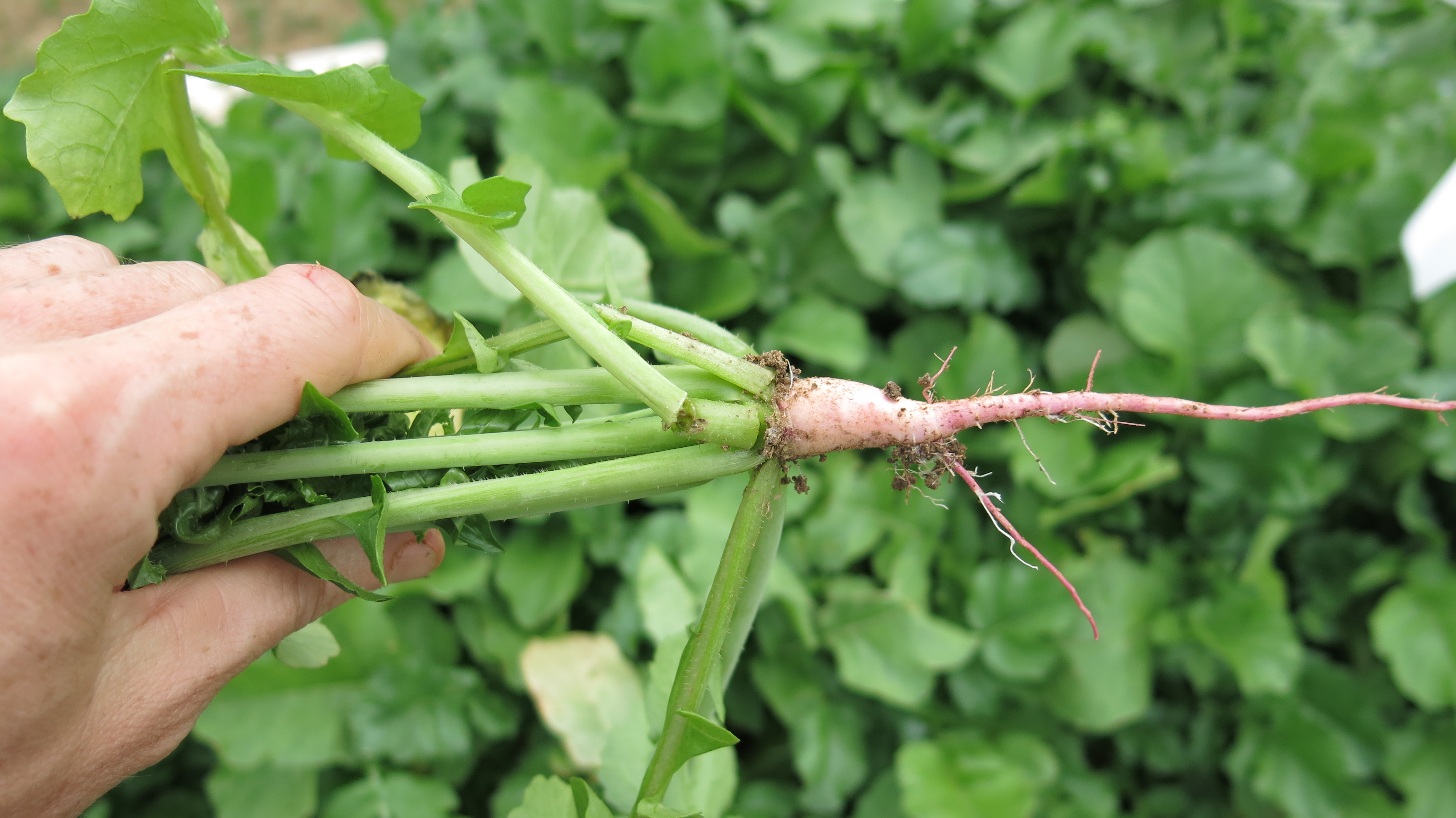
Watermelon from Burpee
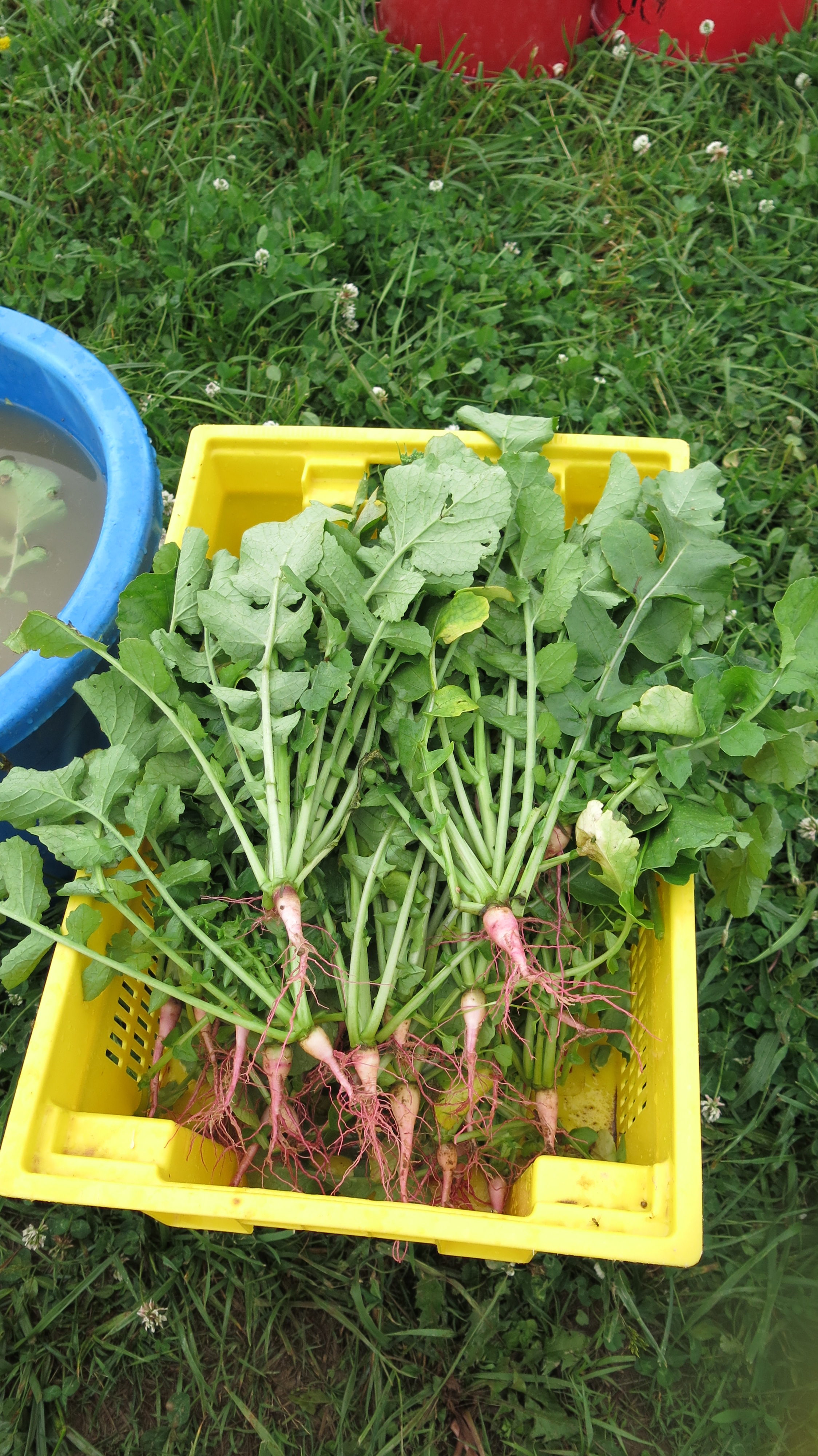
Watermelon from Burpee
Yields: Please keep in mind that these are single plot yields from one location from one year. Clearly, some of these varieties were not well suited to early spring planting in the southern mountains of western North Carolina. They might do better in a fall planting or in another part of North Carolina. It will be interesting to see how our data compare with those of our colleagues in the other southern states.
| Plots were 15 square feet | ||||||
| Variety | Mkt Wt (lbs) | Mkt Count (No.) | Unmkt Wt (lbs) | Unmkt Count (No.) | Total Yield (lbs) | Stand Count (%) |
| Valentine | 0 | 0 | 4.1 | 55 | 4.1 | 85 |
| Watermelon | 0 | 0 | 7.8 | 42 | 7.8 | 90 |
| Red Head | 0.2 | 10 | 0.6 | 26 | 0.8 | 90 |
| Easter Egg | 0.6 | 18 | 0.5 | 33 | 1.1 | 94 |
| Mardi Gras | 0.6 | 6 | 3.1 | 41 | 3.7 | 85 |
| Cook’s Custom Blend | 0.7 | 21 | 0.4 | 21 | 1.1 | 87 |
| Cherry Belle | 0.9 | 33 | 0.3 | 26 | 1.2 | 95 |
| Sora | 0.9 | 18 | 0.7 | 26 | 1.6 | 87 |
| Star Gazer | 0.9 | 3 | 6.5 | 32 | 7.4 | 85 |
| Pink Beauty | 1.0 | 23 | 0.9 | 42 | 1.9 | 86 |
| Ping Pong | 1.0 | 14 | 0.3 | 5 | 1.3 | 45 |
| Amethyst | 1.8 | 43 | 0.6 | 29 | 2.4 | 94 |
| Sparkler | 1.9 | 36 | 1.0 | 32 | 2.9 | 95 |
| Bacchus | 2.1 | 41 | 0.7 | 22 | 2.8 | 97 |
| Nero | 4.9 | 23 | 1.5 | 19 | 6.4 | 90 |
| Runder Schwarzer | 5.1 | 14 | 1.0 | 5 | 6.1 | 95 |

The radish study at harvest time


